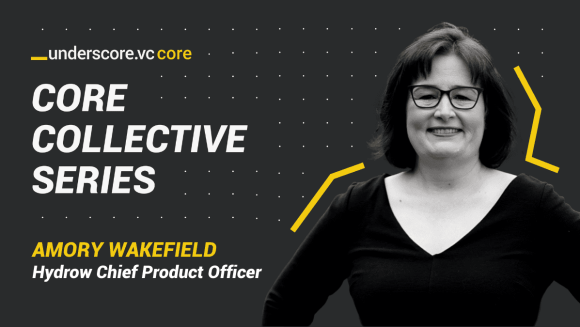“A lot of startup founders, when they first take venture capital, focus relentlessly on top-line growth numbers—bookings, MRR, ARR,” says James Orsillo, Operating Partner at Underscore VC.
Brian Devaney, Principal at Underscore VC, describes it as “feeling a sense of urgency to grow at all costs.” That’s when it gets tempting to start selling to anyone.
“But to set a strong foundation for the business to scale, it’s so much more important to show consistent, repeatable customer satisfaction with one segment of passionate, similar customers,” says Brian. “This foundation is what enables you to quickly grow from $500K ARR to $1M and beyond.”
Building that repeatability starts with identifying an ideal customer profile (ICP). But before we dig into “how” to do that, here’s the “why” behind it.
Why You Need to Focus on an Ideal Customer Profile
Let’s say you land a dozen customers, but they’re in different industries, are different sizes, and use your product for different things. When the time comes to grow your customer base, you’ll struggle to scale your sales process; your messaging, demo materials, and talk tracks will all be a little different, catering to all your customer profiles. And because they lack consistency, chances are, they’re going to miss the mark with prospects.
But beyond sales, these inconsistencies will make it harder to find the right pricing model, product features, business model, and customer support model—because everyone wants something a little different. And it will be inefficient (if not impossible) to constantly customize everything your team does.
“It’s about more than just the product experience,” says Brian. “It impacts every function of the business you’re building.” This is where repeatability comes into play.
Startup Secret: An ideal customer profile lays the foundation to build repeatability into your business.
Repeatability broadly means that you are using the same process to sell and deploy the same product to a specific customer profile—and they’re getting the same value. That’s what enables a business to scale.
Startup Secret: In these early days, repeated customer satisfaction is more important than repeated revenue growth.
While you may feel like you’re not being ambitious enough, or missing out on a massive market opportunity, remember: “Startups usually win because they’re focused,” says Brian. “Your ideal customer profile is just your entry point. Your success will build on itself.”
What Repeatability Is Not
“Ultimately, without repeatability, you lose capital and time,” says James. So for extreme clarity, here are a few examples of what repeatability is not.
It does not include:
- Selling your product to anyone who will buy it
- Tweaking your value proposition or positioning to land a big, well-known customer
- Promising product changes to convince a prospect to buy your product
- Painstakingly customizing your onboarding to get a customer up to speed
- Providing heavy customer support to keep customers from churning
“Chasing revenue like this leads to building ‘custom’ software,” says Brian. “This often becomes a barrier to scaling.”
How to Identify Your Ideal Customer Profile
Talk to customers and prospects all the time, take notes, track their feedback, and listen for patterns.
“Sales and customer conversations influence what you’re building, so filter feedback carefully,” says Brian. “Are there items you’re hearing time and time again that are from a similar set of people?”
Questions for Prospects
- If the prospect says no, why are they saying no?
- What would this product need to have for them to want to use it?
- Why wouldn’t they buy the product?
- What would need to be true about the product for them to buy it?
- When will your company realistically get there?
Questions for Customers
- How are you using the product?
- What is the best thing about it?
- What problem are you trying to solve with it?
- How were you solving this problem without this product?
- Is it a high-priority problem for you to solve?
- If not, what problems are more important?
- What’s wrong with the status quo today?
- What is your current workflow for solving this problem?
- Who is your end customer?
- What are you using in your tech stack?
Reflection Prompts
- Of all the prospect input you’ve gotten, would any additional needs benefit your existing customers?
- Which groups have similar answers?
- Where is there a central clump of them?
- Can you filter by organization size?
- Can you filter by industry?
- Note: Even if you have a horizontal product, you still need to identify things that are true about your customer’s business.
- Can you filter by company stage?
- Of the prospects that say yes, what do they have in common?
- Of the customers that are the most satisfied, what do they have in common?
As you review your data, you’ll likely notice similarities and patterns between your most enthusiastic, happiest customers. This information will help you form your ideal customer profile.
Put another way: “If I could hand you 50 perfect customers, what would be true about them?” asks Brian. This profile will guide your sales, marketing, product development, and more.
In summary, don’t skip building the right foundation for your company. By identifying your ideal customer profile, you set your business up for success and scalability.










